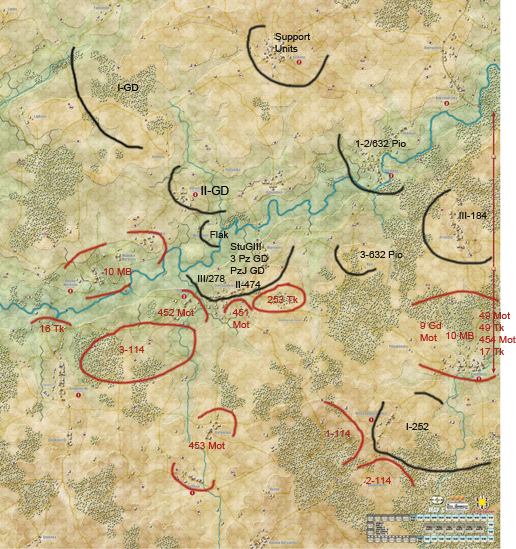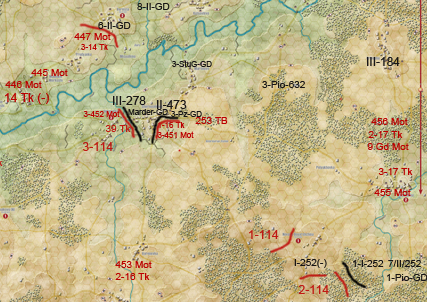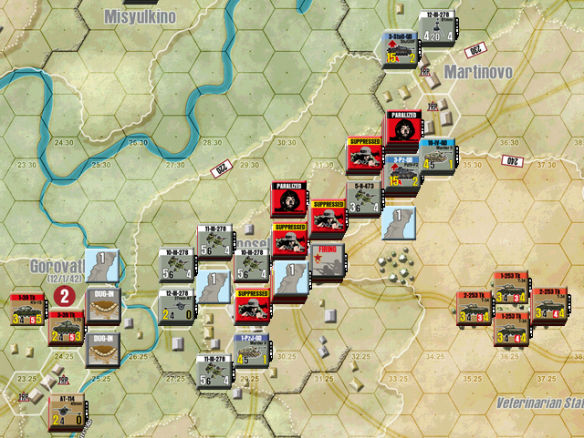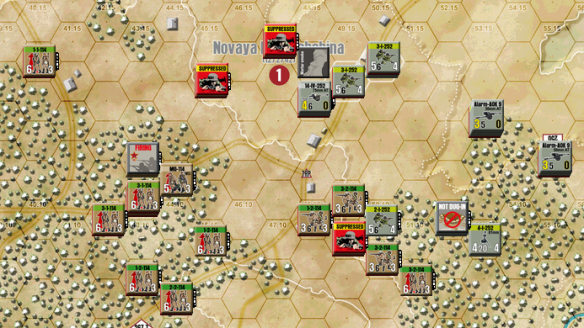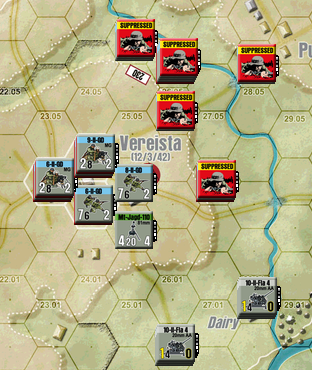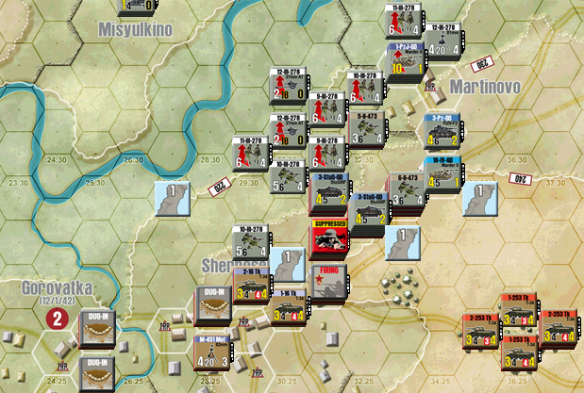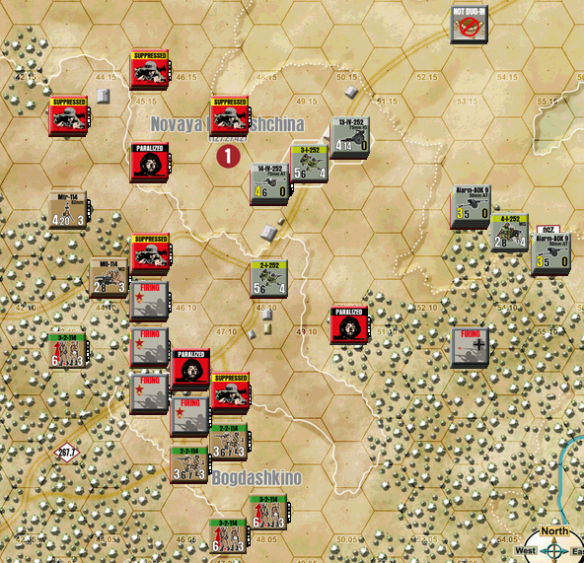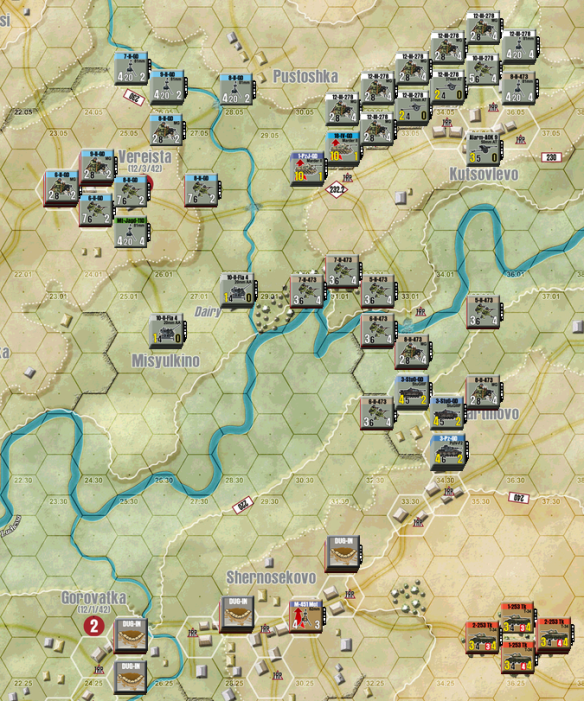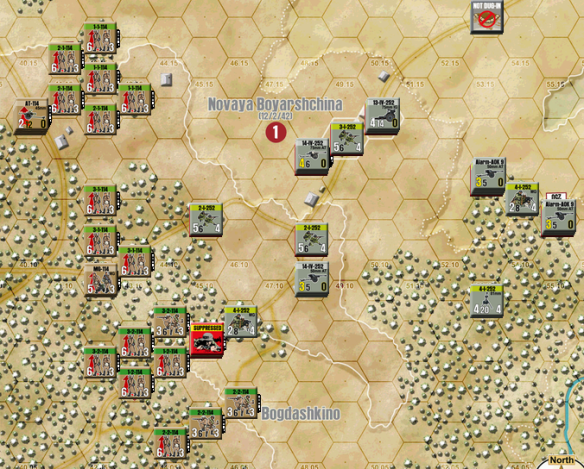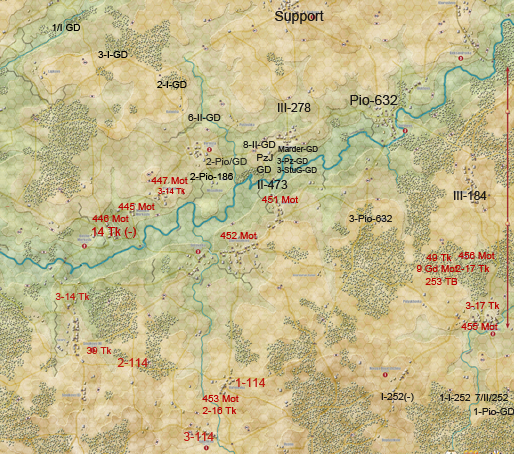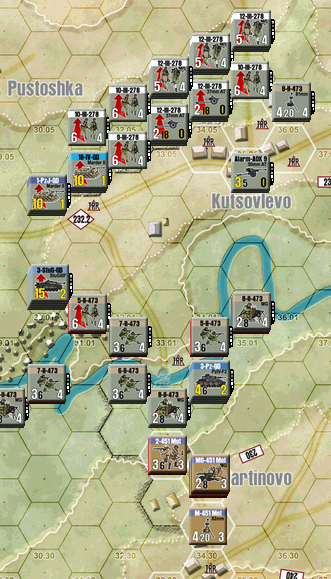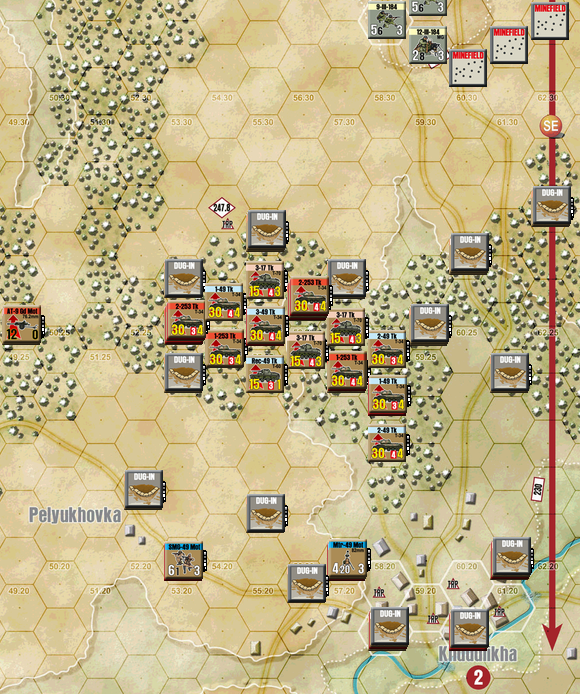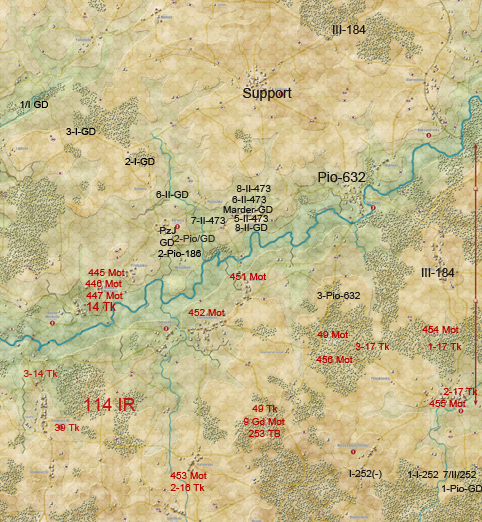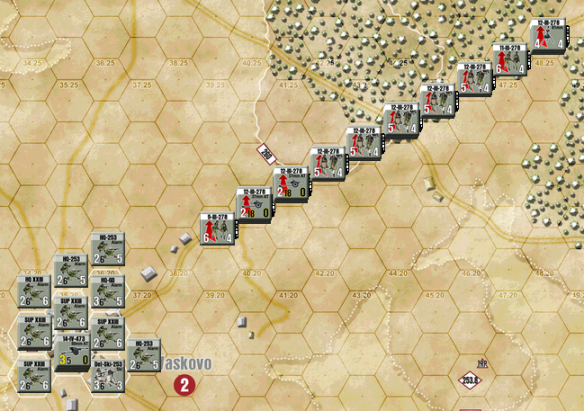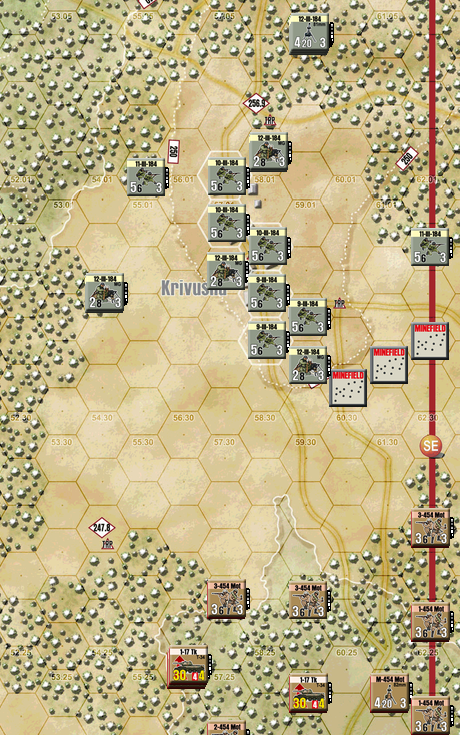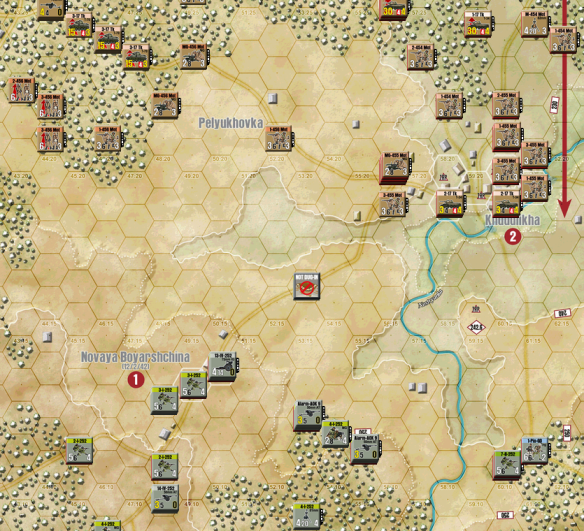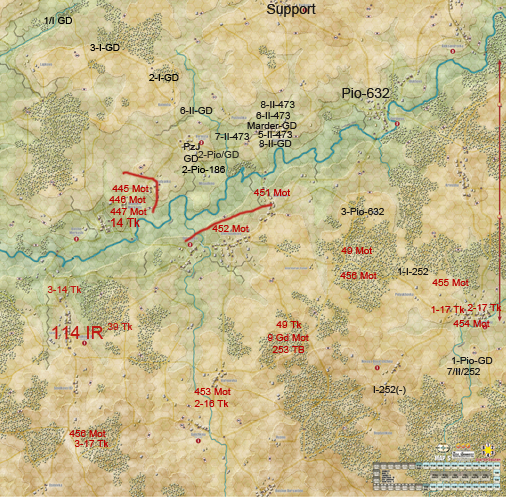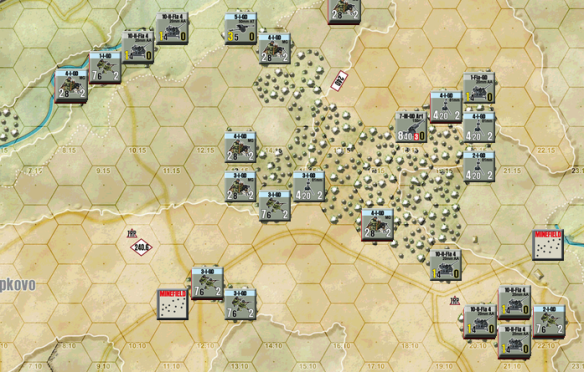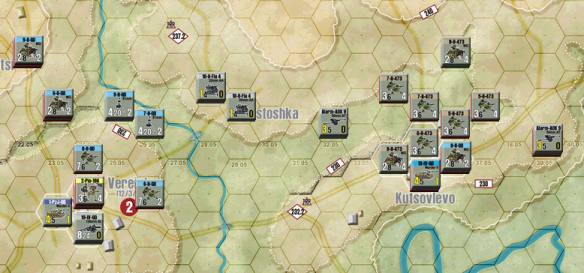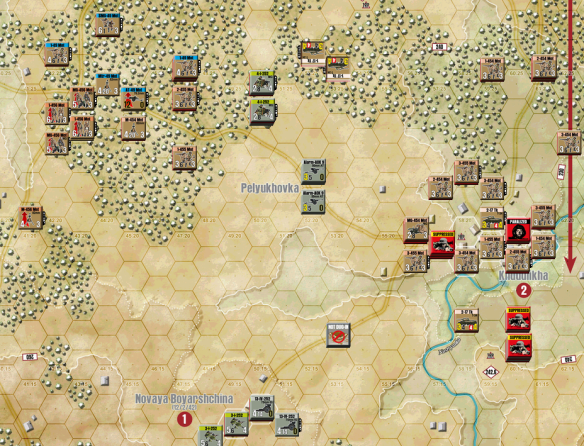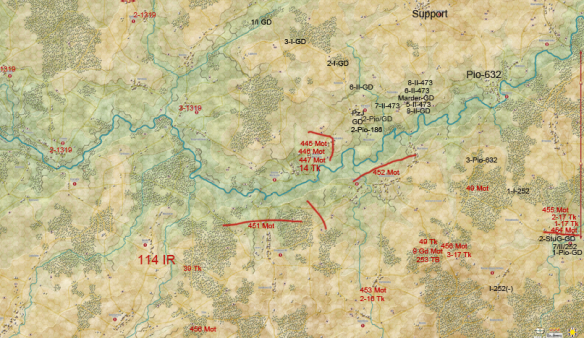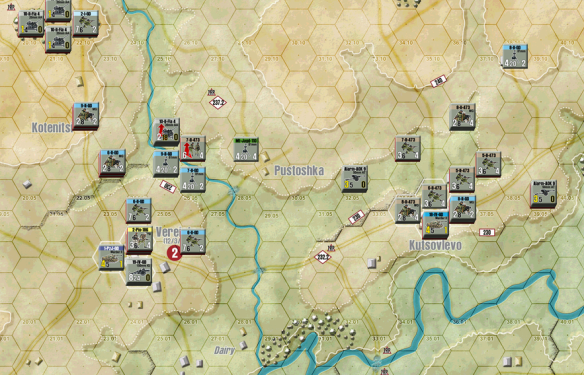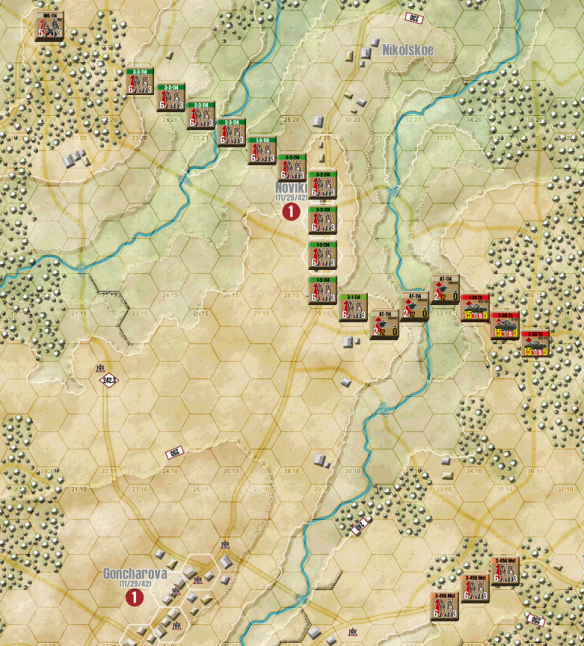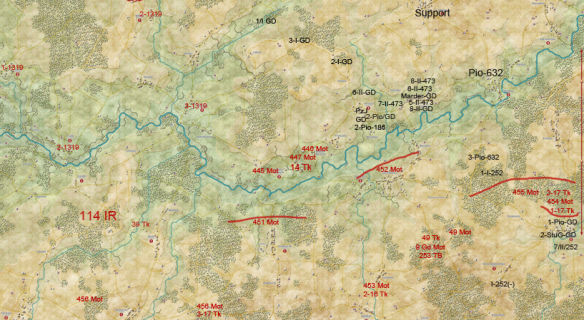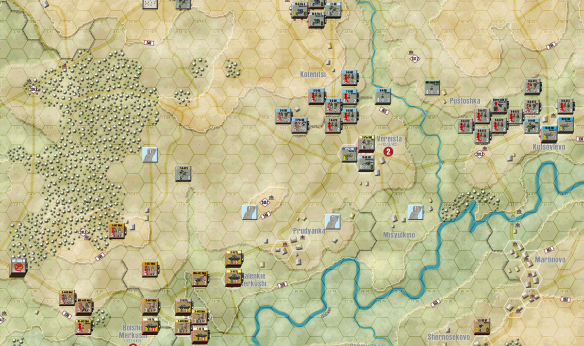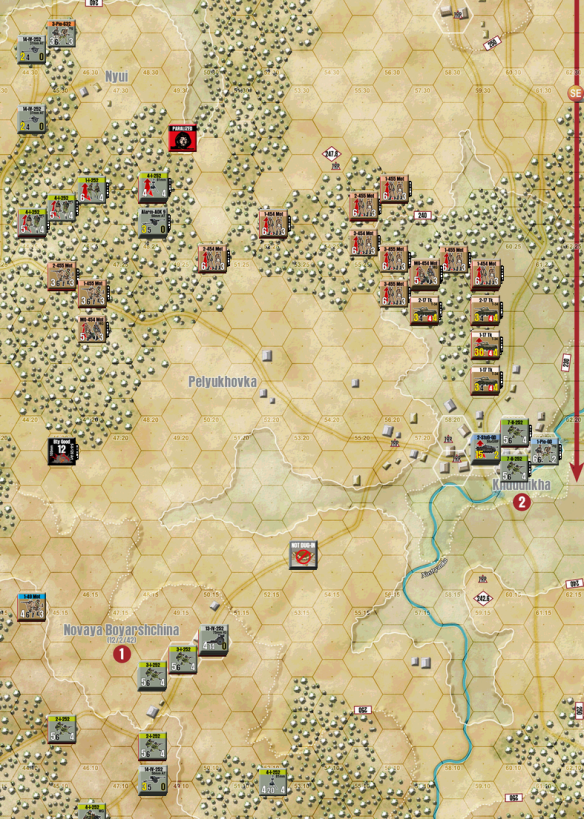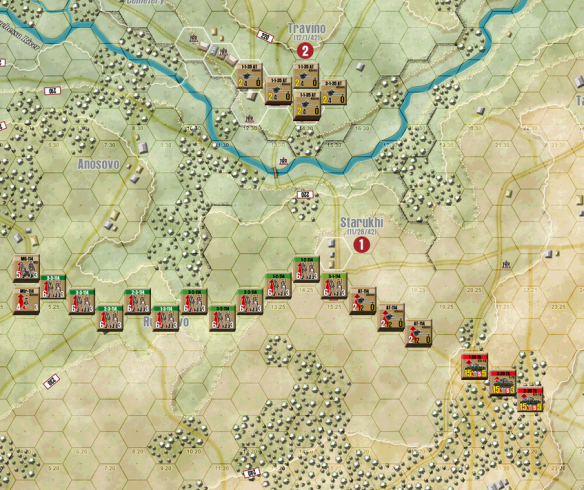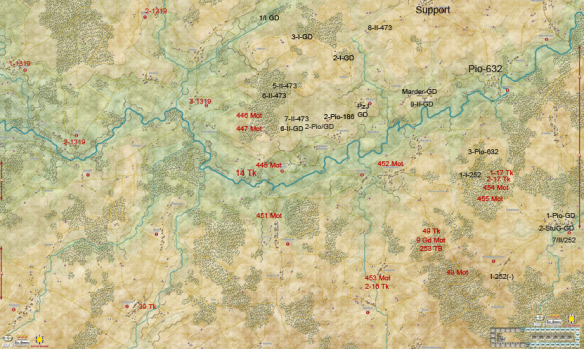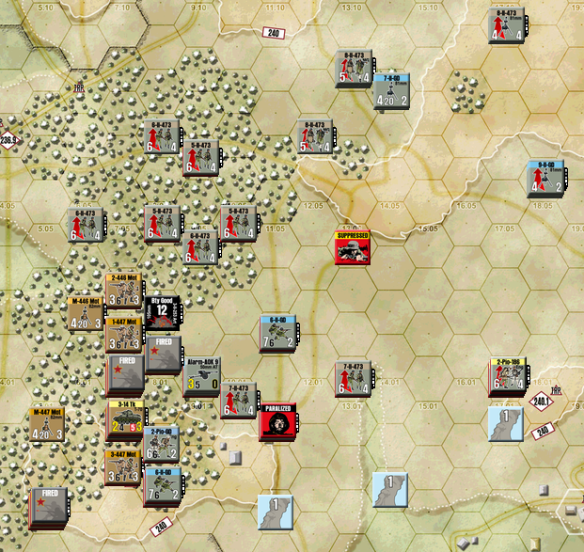At this point, the GM called the game as a Soviet victory. It was clear that the German counterattack would not succeed, and that German resources were insufficient to rescue the game. Novaya Boyarshchina was going to fall, and this would free up 2 more battalions of Soviet infantry to defend the bridges at the Luchessa and keep the MSR secure. With massive amounts of forces exited, this is a Soviet Major Victory.
Was this game a foregone conclusion? By no means. The Soviets won by creating a victory plan from the very beginning and pursuing it doggedly over the years this game took to play. Soviet team communication was good, and while there were inefficiencies all over the place, the plan as designed functioned and secured victory. Point wise the Soviets would have a minor victory, but with a number of shifts from exited formations.
Could the Germans have performed better? By all means. A few errors that cost heavily:
1) The strong German forces in the north were immobile most of the game. The Soviet back areas were only lightly held. There was much untapped potential in striking an area where the Soviets were week. As it turned out, each German attack ran right into a significant Soviet force, while the main Soviet attack hit a seam in the German line.
2) Communication among the German team members could have been better. This is of course difficult in a long game like this with some players experiencing months of limited or no action.
3) The main German error was not identifying the Soviet plan and moving enough forces to block the Soviet main attack. An entire company of engineers (Pio 632) could have been sent, as well as support troops from Vaskovo and even some more of GD, since the north was not being pressured at all. Had the Germans evened out their lines and put enough forces in the south, they could have held Novaya Boyarshchina and Khudilikha and prevented Soviet exit, getting a draw on points and perhaps even a minor victory based on Soviet losses.
4) Had KG North been given a few vehicles and sent into the Soviet back areas, they could have taken any number of the weakly held villages with strong artillery support. This would have terrorized the Soviets, threatening to cut their MSR and potentially costing the Soviets a day or two of operations to try to recover those towns.
So while the Germans felt overwhelmed by Soviet force, a more active defense with counterattacks against weakly held areas could have turned this game around.
My congratulations to the Soviets but also to all the players who endured a long pbem game that had frustrations for all, with bad intel, bad communication etc. I hope it gave just a bit of flavor of the frustrations of actual combat command! The game ran very accurately to what was historically possible, and I continue to be immensely impressed both with GD ’42 as a game, as well as the Tactical Combat Series as a game system. It was a privilege to watch this game develop and help the players construct an amazing narrative.
ALL of the Vassal save files are located here for those who want to examine the units!
http://www.hope.edu/academic/language/forester/GD42_vassal_saves.zip

